Digital Poster
Miscellaneous Pediatric Neuroimaging, Including Brain Tumor MRI/MRS
ISMRM & ISMRT Annual Meeting & Exhibition • 10-15 May 2025 • Honolulu, Hawai'i

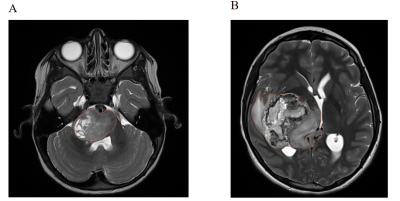 |
Computer Number: 129
2086. MRI
Radiomics Features Correlates of Overall Survival in H3K27M
Mutant Pediatric Diffuse Midline Gliomas
M. Özakçakaya, N. T. Güven, G. H. Hatay, E. Sümer-Arpak, A.
Ersen-Danyeli, M. Özek, B. Tanrıkulu, A. Dinçer, E. Ozturk-
Isik
Bogazici University, Istanbul, Turkey
Impact: Several radiomics features indicating
heterogeneous tumor texture, presence of contrast
enhancement and/or necrosis and pons localization were
associated with shorter overall survival in H3K27M-mutant
pediatric diffuse midline gliomas, which might potentially
aid in treatment planning and patient prognosis improvement.
|
|
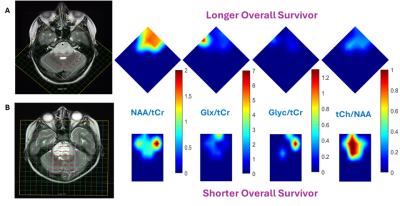 |
Computer Number: 130
2087. Pre-treatment
tumoral levels of total choline, glycine, and Glx predict
overall survival in diffuse intrinsic pontine glioma
R. Burman, P. Goyke, S. Zhang, Y. Wang, E. Pavao, S.
Somogyi, S. Pinto, Y. Fan, M. Scoggins, W. Reddick, A.
Onar-Thomas, J. Chiang, C. Tinkle, P. Bagga
St. Jude Children's Research Hospital, Memphis, United States
Impact: Mapping tumor metabolites using 2D-CSI prior to
treatment may predict overall survival in patients with
diffuse intrinsic pontine glioma. This approach may offer
valuable prognostic information, potentially guiding
personalized therapeutic strategies in this highly
aggressive and lethal pediatric brainstem cancer.
|
|
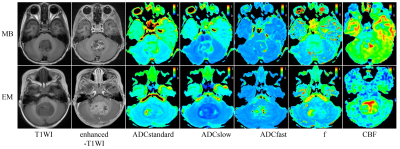 |
Computer Number: 131
2088. A
comparative study of ASL and IVIM between medulloblastoma and
ependymoma of posterior fossa in children
F. Zeng, Y. f. Zha, W. Liu, Y. Fan
Renmin Hospital of Wuhan University, Wuhan, China
Impact: The diagnostic efficacy of the ADC-values is
better than that of the CBF value for the differential
diagnosis of medulloblastoma and ependymoma, which ontribute
to disease diagnosis and choice of treatment options.
|
|
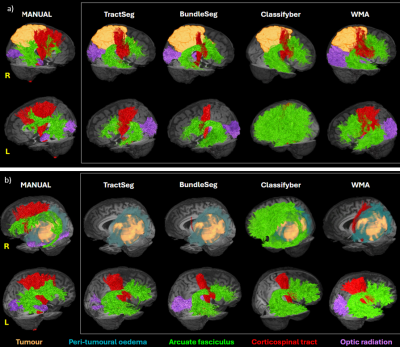 |
Computer Number: 132
2089. Do
current automated tractography methods hold up in tumour and
epilepsy pathology? A comparison of four methods with expert
manual tractography
S. Greenstein, S. Genc, A. Wray, W. Maixner, J. Yang
Murdoch Children's Research Institute, Melbourne, Australia
Impact: This
study uniquely highlights the inaccuracies of using
automated tractography for complex paediatric tumour and
epilepsy surgery, particularly near lesions. It emphasises
the need for standardised tract definitions and appropriate
surgical case data for model training to enhance accuracy.
|
|
|
Computer Number: 133
2090. Radiomics
in Medulloblastoma: Advancing Non-Invasive Diagnosis, Molecular
Subtyping, and Prognostication
M. Fotouhi, A. Shahbandi, F. Samadi Khoshe Mehr, M.
Mohammadzadeh Shahla, S. M. Nouredini, S. Kankam, M.
Khorasanizadeh, L. Chambless
Advanced Diagnostic and Interventional Radiology Research Center, Tehran, Iran (Islamic Republic of)
Impact: This study underscores radiomics' potential to
refine non-invasive MB management, aiding clinicians in
earlier, more precise diagnoses and individualized treatment
plans. It highlights encouraging imaging markers that may
inspire future research on radiomics-driven clinical
protocols and patient outcomes.
|
||
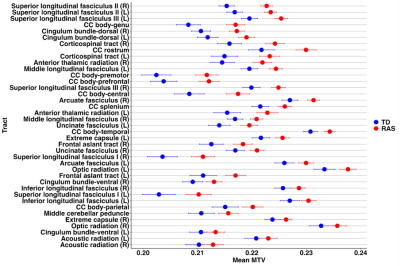 |
Computer Number: 134
2091. Quantitative
T1 measurement of myelin in children with Ras-MAPK pathway
disorders
J. Plank, E. Gozdas, J. Bruno, C. McGhee, H. Wu, M. Raman,
M. Saggar, T. Green
Stanford University, Palo Alto, United States
Impact: Our demonstration of distinct patterns of
myelination in RAS-MAPK pathway disorders suggests a
quantitative neurobiological marker that may be of value for
future work investigating brain-behavior associations or
novel treatment targets in this population.
|
|
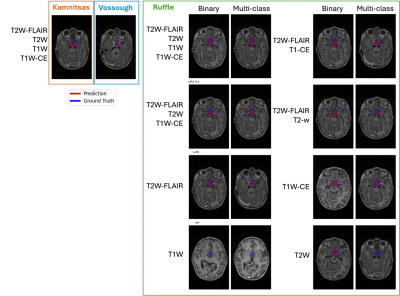 |
Computer Number: 135
2092. Performance
of automated segmentation models for the delineation of
paediatric craniopharyngiomas.
A. Knill, J. Sidpra, V. Yamaki, B. Santanna Peres, V. Lind,
N. ul Owase Jeelani, D. Hargrave, K. Aquilina, U. Löbel, K.
Mankad, E. De Vita
Great Ormond Street Hospital for Children NHS Foundation Trust, London, United Kingdom
Impact: Whole-tumour segmentations using models
published by Ruffle et.al.(2023) have the potential to aid
with volume measurements of paediatric craniopharyngioma on
routine brain MRI. Clinical applications would benefit from
separate segmentations of solid and cystic tumour in future
analysis.
|
|
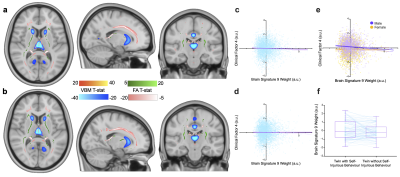 |
Computer Number: 136
2093. Reliable
multimodal brain patterns predict longitudinal mental health
outcomes in early adolescence
K. Manning, A. Llera, C. Lebel
University of Calgary, Halifax, Canada
Impact: Our results demonstrate reliable brain patterns
in childhood that predict primarily sub-clinical symptoms of
anxiety and depression in a population-based sample. These
findings motivate early supports and interventions for
children identified at-risk of poor mental health
trajectories.
|
|
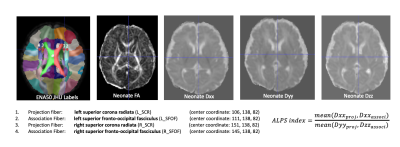 |
Computer Number: 137
2094. Diffusion
Tensor Imaging for Evaluating Glymphatic System Function in
Neonates with Complex Congenital Heart Disease
M. Mora Álvarez, J. De Asis-Cruz, K. Kapse, G. Vezina, M.
Donofrio, C. Limperopoulos
Children's National Hospital, Washington, United States
Impact: Assessing glymphatic system function (GSF) in
newborns is challenging due to the need for contrast agents.
However, this study demonstrates that the DTI-ALPs index
holds promise as a non-invasive biomarker for GSF in
high-risk neonates such as those with CHD.
|
|
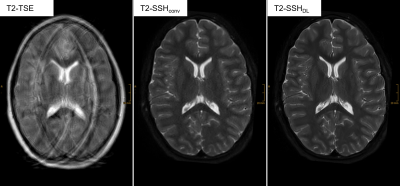 |
Computer Number: 138
2095. Deep
Learning-Based Super-Resolution Reconstruction of T2w
Single-Shot Sequences in Pediatric Brain MRI
A. M. Stylianou, Z. Bendella, C. Katemann, A. M. Sprinkart,
K. Weiss, O. Weber, J. Peeters, T. Schommertz, M. Kadrija,
L. Bischoff, N. Lehnen, R. Clauberg, J. Luetkens, A.
Radbruch, B. Wichtmann
University Hospital Bonn, Bonn, Germany
Impact: Deep
learning reconstruction significantly enhances the quality
of rapid T2w Single-Shot sequences in pediatric brain MRI,
improving image sharpness and lesion conspicuity while
maintaining motion robustness. This advancement could reduce
sedation requirements in pediatric neuroimaging protocols.
|
|
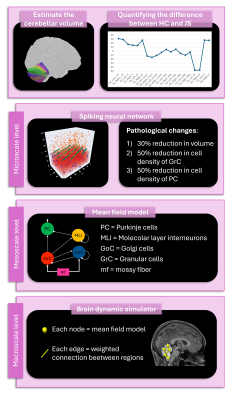 |
Computer Number: 139
2096. Modelling
Joubert Syndrome: a personalized multiscale approach to
investigate brain activity
M. Gaviraghi, R. M. Lorenzi, S. D’Arrigo, A. De Laurentiis,
A. Nigri, M. Grisoli, C. A. Gandini Wheeler-Kingshott, C.
Casellato, F. Palesi, E. D’Angelo
University of Pavia, Pavia, Italy
Impact: Personalized pipelines for diseases, such as
Joubert Syndrome, can help to investigate pathophysiology
and brain activity alterations. The use of a multiscale
approach can be the key to investigate brain dynamic
alterations at multiple levels of complexity.
|
|
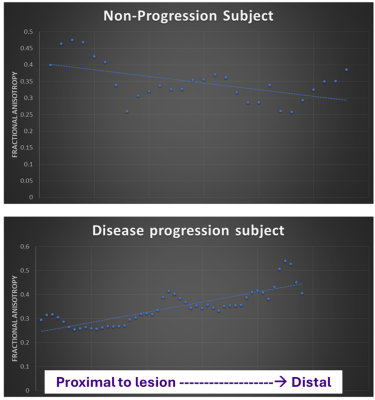 |
Computer Number: 140
2097. Spatial
Gradient of White Matter Microstructure Discriminates
Progressive vs Non-Progressive Cerebral Adrenoleukodystrophy
E. Mallack, A. Jeffries, J. Lin, S. van de Stadt, M.
Engelen, O. Rapalino, P. Musolino, F. Eichler, S. Niogi
Johns Hopkins University School of Medicine, Baltimore, United States
Impact: This analytic approach demonstrated differences
in change in microstructure between patients with ongoing
disease vs those with disease arrest, indicating utility as
a clinical imaging tool to guide imaging surveillance,
prognosis, and appropriate patient selection for treatment
in cerebral adrenoleukodystrophy.
|
|
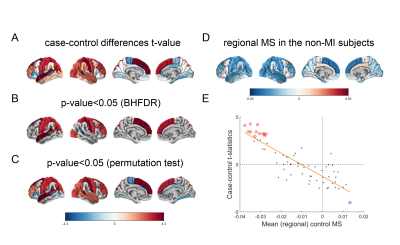 |
Computer Number: 141
2098. Transcriptional
signatures relevance of cortical morphometric similarity network
in infants with external hydrocephalus and motor impairment
Y. Sun, Y. Yin, H. Zhao, C. Jin
Department of Radiology, The First Affiliated Hospital of Xi'an Jiaotong University, Xi'an, China
Impact:
Integrating neuroimaging and transcriptomics enhances understanding of EH-related MI pathogenesis, revealing potential imaging biomarkers for early diagnosis and novel targets for therapeutic intervention. |
|
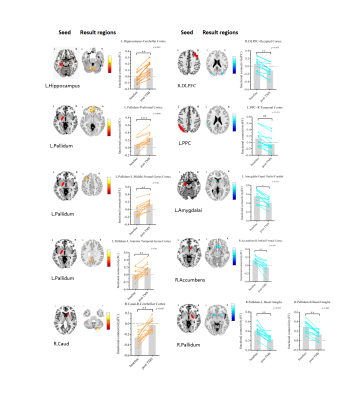 |
Computer Number: 142
2099. Functional
and structural effects of repetitive transcranial magnetic
stimulation for the treatment of adolescent depression
P. Wang, L. Sun, Y. Gao, R. Feng, H. Li, X. Ouyang, X. Huang
West China Hospital, Sichuan University, Chengdu, China
Impact: We identified brain regions potentially
associated with the therapeutic effects of TMS in adolescent
depression, which could potentially may inform more precise
and targeted interventions.
|
|
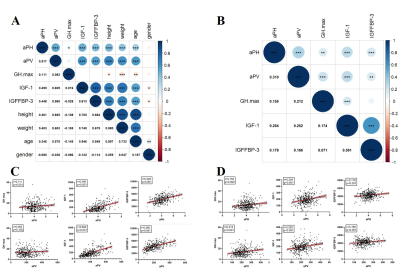 |
Computer Number: 143
2100. Diagnostic
Value of MRI Adenohypophysis Volume in Correlation with IGF-1
and IGFBP-3 in Adolescents Growth Disorders
D. Liu, W. Liu, J. Cai
Tongji Hosptial, Tongji Medical College, Huazhong University of Science and Technology, Wuhan, China
Impact: This research highlights the 3D CUBE MRI
technique's potential to non-invasively assess pituitary
morphology and its hormonal associations, providing valuable
insights for pediatric endocrinology and enhancing
diagnostic strategies while reducing reliance on contrast
agents and associated procedural risks.
|
|
 |
Computer Number: 144
2101. Preliminary
Study on Axonal Integrity in Pediatric Myelin Oligodendrocyte
Glycoprotein Antibody-Associated Disease Using NODDI Technology
H. Cheng, Y. Li, W. Zhang, C. Ren, B. Jiang, D. Zheng
Beijing Children’s Hospital, Capital Medical University, Beijing, China
Impact: We demonstrated that NODDI is a better technique
for assessing axonal damage in pediatric MOGAD compared to
DTI, improving diagnosis and treatment monitoring. This
allows investigation of axonal damage, enhancing patient
outcomes and refining treatment strategies for pediatric
demyelination diseases.
|
The International Society for Magnetic Resonance in Medicine is accredited by the Accreditation Council for Continuing Medical Education to provide continuing medical education for physicians.